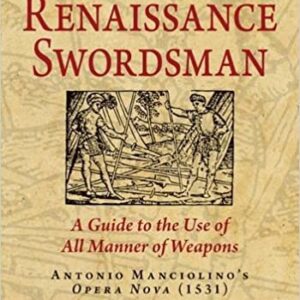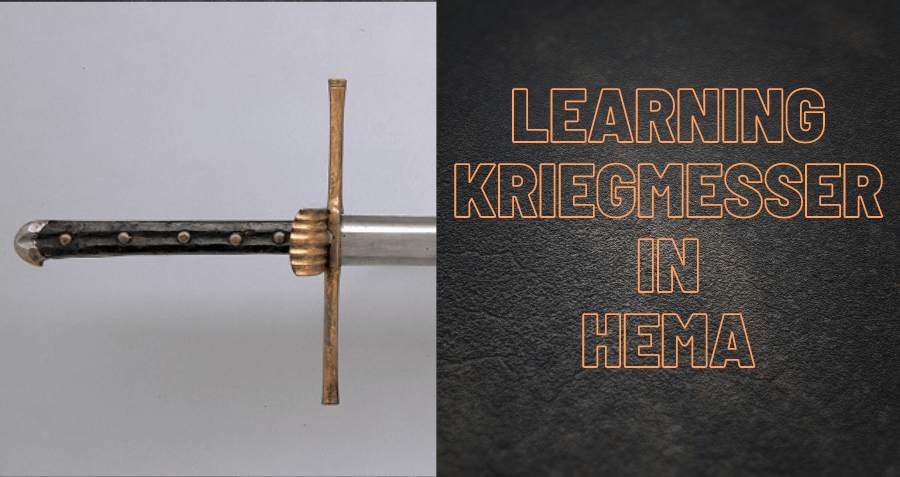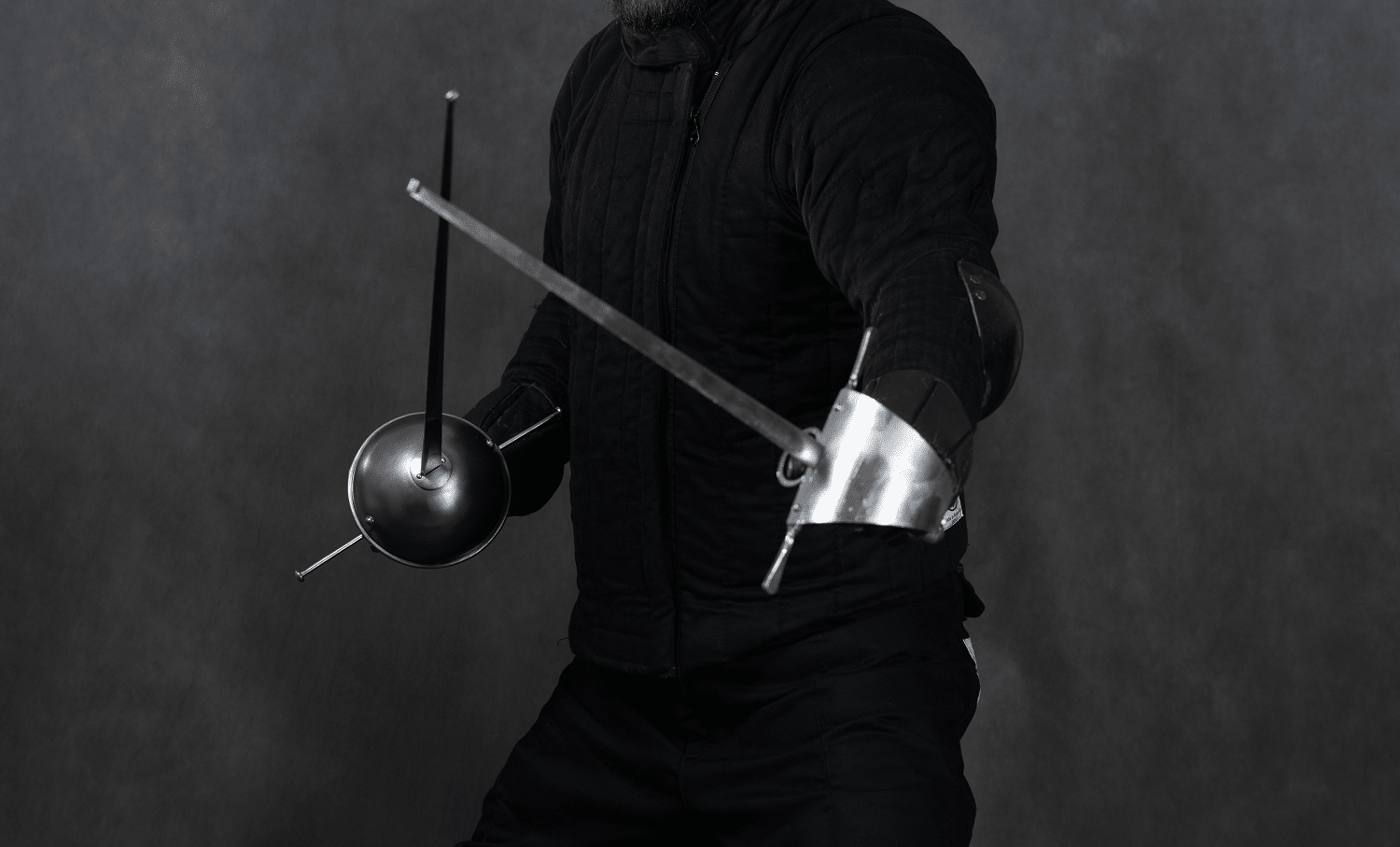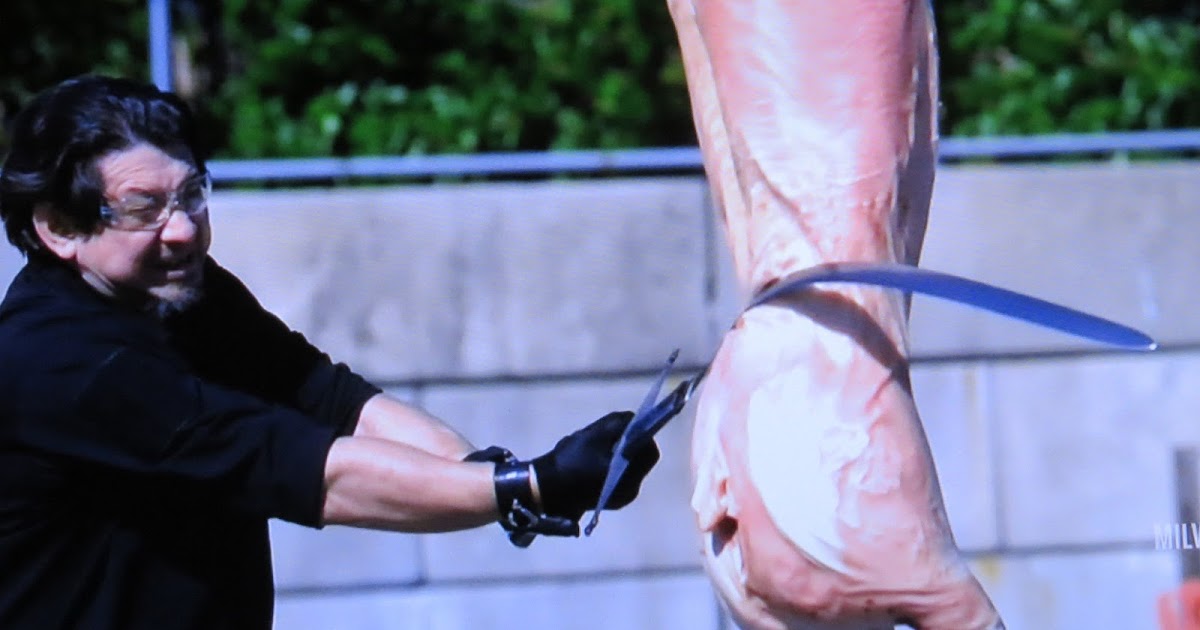If you are a martial artist who wants to learn how to fight while wielding two swords in each hand, it’s imperative that you learn the right techniques to do so. Use the following tips and tricks to help you master the art of fighting with two swords in Historical European martial arts (HEMA).
There’s a reason why a lot of people don’t dual wield swords – it’s hard to do. It takes a lot of coordination, a lot of practice, a lot of muscle memory and a lot of agility. But if you’re determined to do it, there are historical methods of how to do so.
Historical Treatises Teaching How to Duel Wield European Swords
Dual wielding swords is often erroneously claimed to not be a historical practice in European swordsmanship. This is erroneous because some surviving historical fencing treatises do provide instructions for how to fence while wielding two swords.
One of the earliest surviving manuscripts recording a method for a dual wielding two sword fighting system is Antonio Manciolino’s Opera Nova (“A New Work”). Written in 1531 it describes several methods of fighting with a sword and another paired weapon, including bucklers, rapier and a second sword.
Another well known example of dual wielding swords comes from the 16th century Bolognese school master Achille Marozzo in his similarly named treatise Opera Nova (“A New Work”). Written in 1536, Opera Nova provides instructions for fighting with the sword in one hand, with a sword and buckler, with a sword and buckler and with a sword wielded in both hands (in addition to fighting with other weapons, such as a great sword). Due to the number and quality of its illustrations, Achille Marozzo’s version of the Bolognese school fencing techniques for dual wielding swords is more popularly studied within the HEMA community than Manciolino’s treatise.
You should keep in mind that the Bolognese school used side swords for dual wielding. What are side swords? The side sword is a transitionary type of sword between a knightly arming sword and the later rapier. You should keep in mind the label ‘Side sword‘ is a modern term used within the HEMA community to refer to what is basically an arming sword blade with a complex guard hilt. Another term for this type of sword is ‘cut and thrust sword’ but this can also be applied to other types of short swords as well; the term ‘side sword’ is therefore more specific.
In order to dual wield swords using the Bolognese school techniques, you need to make sure you have the right kind of swords. Long swords are great for beginners because they’re easier to handle and control, but you’ll have great difficulty dual wielding two longswords together due to their length. It’s better to use side swords instead as these have shorter blades.
So, if you’re looking to dual wield swords, the Bolognese school treatises a great place to start. You can learn techniques from different videos that you can use in your own choreography.
Additional Tips for Learning How to Dual Wield Swords
So, how do you learn two sword fighting techniques? You need a good teacher, of course, but you also need to be prepared to put in the work. Keep practicing every day and you’ll begin to see a big improvement in your skills. Look for a style that suits you and practice every day.
One of the most important things when it comes to dual wielding swords is that you must be comfortable with your weapons. Your swords must feel like an extension of your body. You also have to practice a lot to be able to dual wield swords effectively.
Don’t give up when trying to learn how to dual wield swords. It may feel unnatural at first but if you keep at it, you’ll get the hang of it. Don’t be afraid to ask other people to help you learn. Pay attention to the way the swords feel in your hands.
Additional Types of Swords You Can Learn to Fight With in HEMA
There are many different types of swords you can learn to fight with from Historical European martial arts treatises. You can learn how to fight using long swords, rapiers, sabres, great swords and so on. Below are some additional resource pages on our website to help you learn these martial art traditions.
****
If you’d like to learn more information about historical European martial arts fencing practices please check out our Learn HEMA page for a guide to learning about the historical weapon that interests you. You can also find more guides we’ve written about other topics at our Helpful Guides page. You can also join the conversation at our forums or our Facebook Group community.



















2 Responses
Is there any sparring/tournament footage to go along with the advice? Even what people describe as basic advice needs supporting evidence. You make the claim that wielding two sideswords is easier than two longswords, and I would agree based on my experience, but there doesn’t look to be anything supporting that claim. Which then leaves even your advice on looking at Opera Nova in a chaotic state where the individual can’t trust it until after they’re put hours into their own practice.